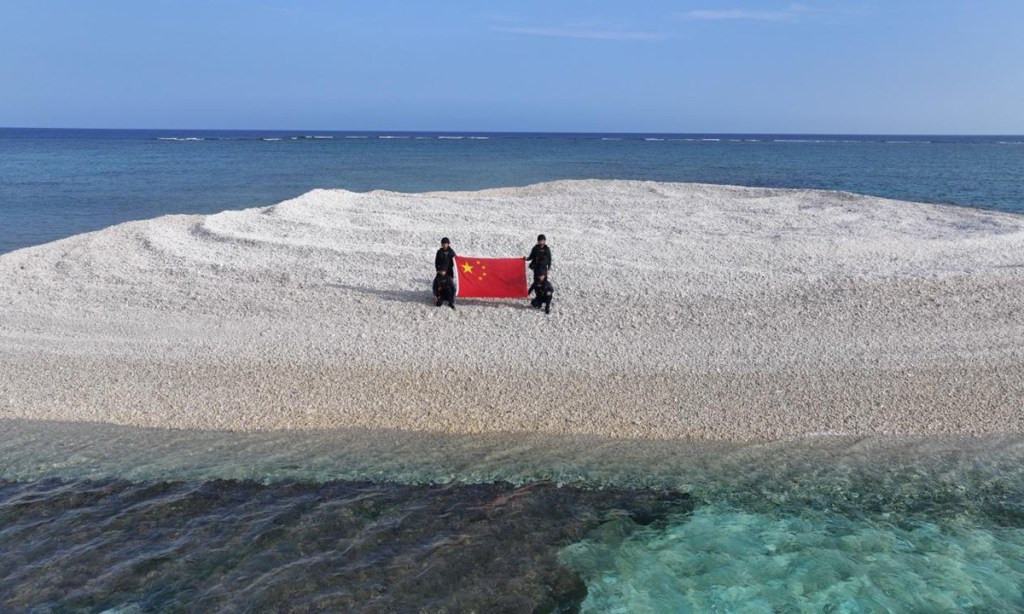Philippines Could Receive $2.5 Billion in Security Aid from U.S. Defense Bill
Read More »Tag: Philippine Navy
A Narrow Pacific Waterway is at the Heart of U.S. Plans to Choke China’s Vast Navy +
Reuters reprint: A Narrow Pacific Waterway is at the Heart of U.S. Plans to Choke China’s Vast Navy
Until recently, locals say, this smallest and least populous province of the Philippines was a peaceful backwater. But geography dictates that it is now on the frontline of the great power competition between the United States and China for dominance in the Asia-Pacific region. The islands sit on the southern edge of the Bashi Channel, a major shipping lane between the Philippines and Taiwan that connects the South China Sea with the Western Pacific.
This year’s exercises revealed how the U.S. and its Philippine ally intend to use ground-based anti-ship missiles as part of efforts to deny the Chinese navy access to the Western Pacific by making this waterway impassable in a conflict, Reuters reporting shows. These missiles could also be used to attack a Chinese fleet attempting to invade Taiwan or mount a blockade against the democratically governed island.
…
Recent Chinese maneuvers show how access to the Bashi Channel is critical for Beijing’s plans in the Pacific. In June, a powerful Chinese navy aircraft carrier battle group used this passage to enter the Western Pacific before launching an extended series of exercises south of Japan, according to Japanese military tracking data.
Related:
Read More »Japan Is Strengthening the Philippine Navy to Deter China in the South China Sea +
As global attention focuses on China and Japan, Tokyo and Manila are quietly deepening their economic and “defense” ties.
Manila Recovers Chinese Underwater Drone Operating in Philippine Waters
[Aaron-Matthew Lariosa, 10-01-2025] Manila Recovers Chinese Underwater Drone Operating in Philippine Waters
Read More »The August 11 SCS Incident & US-Backed Fisherfolk Collectives in the Philippines
Note that Scarborough Shoal is in disputed territory: What’s Really Going On In the South China Sea Between the Philippines and China.
Scarborough Shoal Incident 2.0: The PLAN Inches Closer to War (archived)
A Chinese People’s Liberation Army Navy (PLAN) destroyer and China Coast Guard (CCG) cutter collided 10.5 nautical miles east of Scarborough Shoal in the Philippines’ exclusive economic zone (EEZ) on the morning of 11 August. It marked the second time China has been embarrassed by the Philippines in these waters. This time, the results appear to have been deadly, as at least four members of the CCG were either severely injured or killed during the violent collision.
…
The latest incident appears to have been set in motion by an order from a Chinese higher authority, most likely the Central Military Commission’s (CMC’s) Joint Operations Center (JOC), to disrupt the Philippine Coast Guard’s “Kadiwa ng Bagong Bayaning Mangingisda (KBBM)” program. The KBBM initiative was unveiled in May 2025 with the intent to provide Philippine fishermen with food security and resupply at sea [See KBBM, below]. Analysis of Automatic Identification System (AIS) data indicates many CCG cutters were arrayed around Scarborough Shoal on 11 August, and as Philippine CG cutters entered waters 20–30 nm around the shoal, CCG and PLAN ships converged on the Philippine cutters to disrupt their food supply operations.
For more than an hour, PLAN guided-missile destroyer Guilin and CCG cutter 3104 conducted a high-speed pursuit of the Philippine Coast Guard cutter BRP Suluan. Based on the events during this pursuit, it appears the CMC JOC ordered the use of physical force to stop the Philippine Coast Guard from their mission. According to Armed Forces of the Philippines Chief of Staff General Romeo Brawner, “Our assessment is that the real objective of the PLA Navy ship is to ram our Philippine Coast Guard (vessel). That is also (the) assessment of our Philippine Coast Guard.”
FYI, the author of the above article is one of the founding members of the hawkish Committee on the Present Danger: China. You’ll also find information on the first Scarborough Shoal incident in here, also known as the Scarborough Shoal standoff: August 11 SCS – James E. Fanell – SeaLight.
Background:
Read More »Chinese ship runs aground off Philippines-occupied island in the disputed South China Sea + More
Philippine Forces Land on Contested South China Sea Feature
China seizes disputed reef in the South China Sea + More

Financial Times: China seizes disputed reef in the South China Sea (archived)
It comes as the Philippines and its ally the US are conducting Balikatan, their largest annual military exercise, which will include coastal defence and island seizure drills. They will be held from next week on the Philippine territory closest to the Spratlys.
Read More »
Philippines set to host second Typhon missile system, signalling Trump’s defence pledge + More
Philippines set to host second Typhon missile system, signalling Trump’s defence pledge
He added that the Typhon’s presence signalled renewed US commitment to the region, which would be further reinforced by separate visits to the Philippines by US Defence Secretary Pete Hegseth this week and Secretary of State Marco Rubio next month.
Read More »
PH: Sputtering WPS gaslighting
Sputtering WPS gaslighting (archived)
THE West Philippine Sea “cognitive warfare” narrative has been playing since Sept. 2012 when then President Noynoy Aquino signed Administrative Order 29 “Naming the West Philippine Sea of the Republic of the Philippines, and for other purposes.”
…
This has already caused massive real economic damage to Filipinos, like the loss of 1.5-million Chinese tourist arrivals and $1.5-billion (P90-billion) tourism revenues for our six million tourism workers.
Even worse, it can give the US the basis for creating a false flag operation blaming China for a human disaster and precipitating a major conflict – which is clearly what the US warmongers intend as evidenced by the US military bases in the country.
Previously:
Chinese Navy Helicopter Intercepts Philippine Cessna Over Scarborough Shoal + Embedded Journalism


You must be logged in to post a comment.